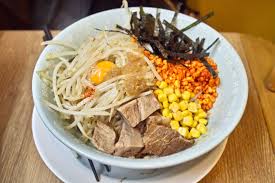Macrobiotics were all the rage in the early 80’s…but more than a fad, this is actually a way of eating that has been around since the early 1800’s. Though trends come and go, this is still a popular diet to follow. Find out more about what it entails.
What is the Macrobiotic Diet?
The Macrobiotic Diet was founded by George Oshawa. It is based on the Asian principles of yin and yang and dictates a diet and lifestyle that one should follow for optimal mental and physical health.
Not only does this diet provide guidelines for what to eat, it suggests how you should eat. This includes many rituals to promote mindfulness and balance like expressing gratitude before each meal and chewing food at least 50 times before swallowing. Overeating is discouraged. It is best to eat when you are hungry and stop when you are satisfied.
The principles of yin and yang are further capitalized on in the type of foods you eat. Yin represents passive natural forces that can be represented by vegetables. Yang represents active forces including grains. To achieve balance, both foods should always be served together.
Food should also be prepared in clay or stainless steel cookware. The use of microwaves and electric stoves is discouraged.
Exercise on the Macrobiotic Diet
There is no set exercise routine on the macrobiotic diet, but physical activity is encouraged as is yoga and meditation.
Nutrition on the Macrobiotic Diet
The Macrobiotic Diet is based on a pescatarian diet meaning it includes locally and organically grown foods including whole grains, beans and vegetables. Fresh seafood, fruit and nuts can be eaten three times a week. Herbs should be used to add flavor and rice syrup is the recommended sweetener. Soups are also recommended because they are easily digested.
Foods to avoid include spicy foods, dairy, eggs, meat, sugar, processed food and nightshade vegetables. As far as drinks go, alcohol, soda, coffee and fruit juice should be eliminated and even too much water is discouraged.
There is some concern that dieters who follow the Macrobiotic Diet may not be getting enough of certain vitamins and minerals including B12, iron, omega-3 fatty acids, zinc and vitamin D.
Reviews of the Macrobiotic Diet
The Macrobiotic Diet is one whose guidelines have been detailed in several of Oshawa’s books. Here’s what some readers are saying:
“I have had severe brittle diabetes since I was six. I was running blood pressure of 160-170 over 110-120 when I read this book. When I began practicing his diet and teachings, my blood pressure dropped gradually to where it has been since, 120-125 over 80 to 90. I have also, several times, used his cures for specific ailments.”
“This book started me off in1969 and has held steady ever since. Completely won me over for food balancing wherever I am or go.”
“Diet creates the physical body and the emotional body as well.”
Advantages of the Macrobiotic Diet
- Can help you lose weight.
- Promotes a healthier lifestyle.
- Encourages mental and physical wellbeing.
Disadvantages of the Macrobiotic Diet
- Difficult to maintain due to food that must be prepared from scratch and purchased locally whenever possible.
- Involves a complete over haul in lifestyle for many.
- There is no central place that provides guidelines for the diet, no website or DVD available. There are several books written by Oshawa, but each provides specific information with no central source.
- There is no specific exercise routine recommended with the diet.
- Could lead to a vitamin deficiency.
Conclusion
The Macrobiotic Diet will work to improve overall health and could also help dieters to manage weight and stress levels. However, because it involves such a huge change in lifestyle, it is not for everyone. Decide whether you want to commit to all the diet’s guideline’s before proceeding.



















